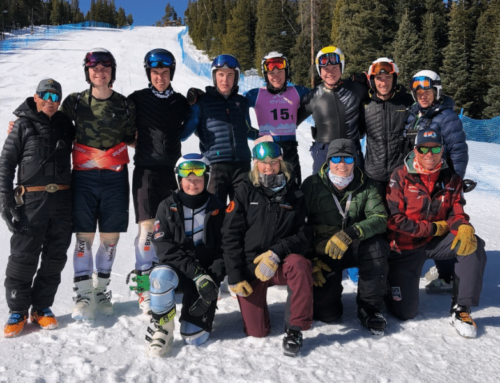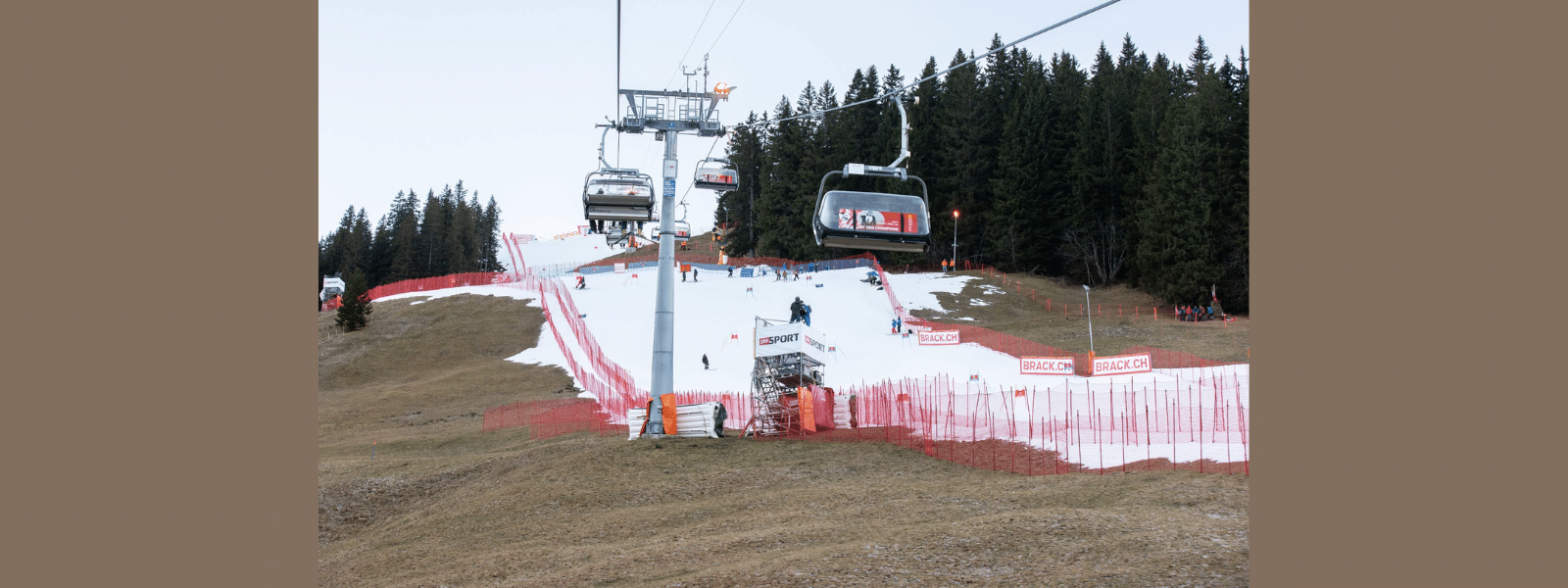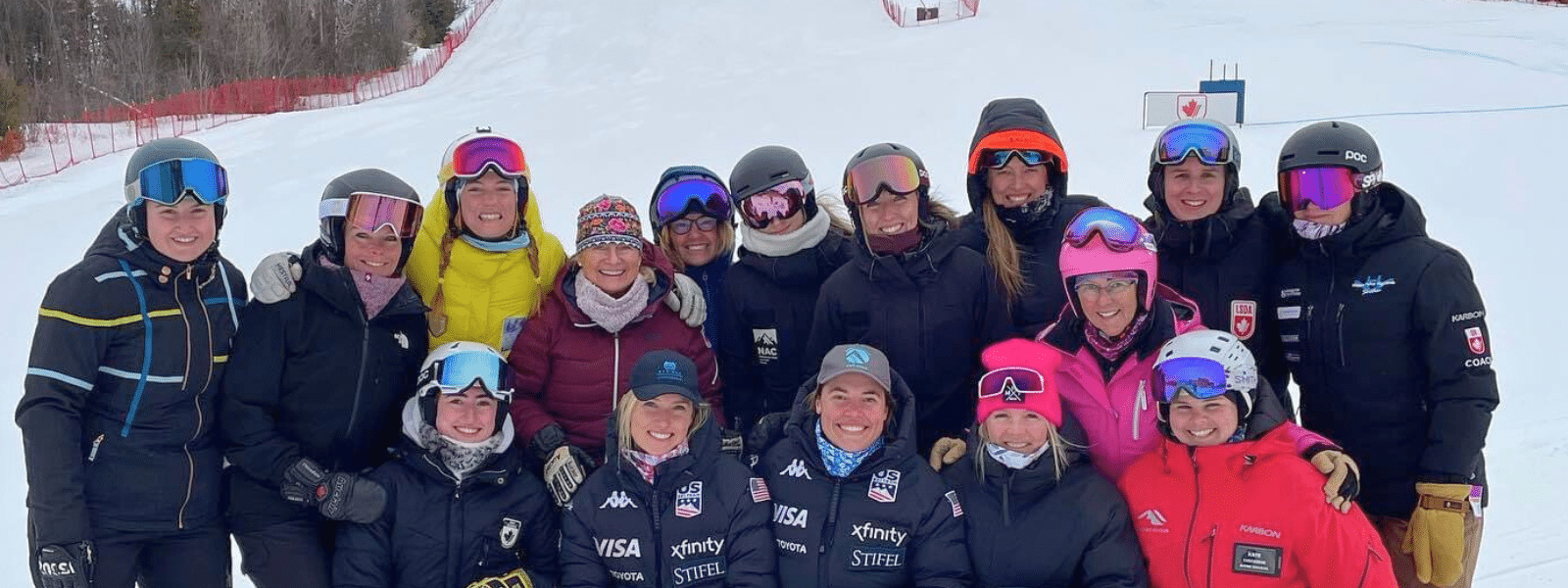Cries for Change in American Alpine Skiing
The 15th day of March lives in infamy as the Ides of March. It marks the historic day in Roman history when leader, Julius Caesar, was killed, changing the course of power and history in the ancient civilization. In short, it was an act of violence and cry for change.
On that same day in 2018, a far less violent, yet similar cry for change, was delivered to the ski racing community when Dan Leever, a familiar, outspoken supporter of the sport from Vail, Colo. published an essay he wrote titled “What’s Wrong with U.S. Ski Racing?”
The treatise, which Leever published on his Facebook page, has been widely read, with 368 shares at the time of this story’s publication, and widely discussed with 176 comments. Among those who have weighed in on Leever’s ideas are Edie Thys Morgan (a well-loved columnist for this publication) who expanded on Leever’s post in an entry on her RacerEx blog. Former USST coach, Phil McNichol; father of two World Cup athletes, Steve Kelley; and Director of Sport Education at U.S. Ski & Snowboard, Jon Casson are just a few of the others who have weighed in on the Facebook discussion. Two days after he published it, Leever said he went to a junior ski race in Colorado where he was heavily engaged in conversation about his ideas and opinions.
“I am a little taken by surprise by the reaction so far,” Leever said.
In the essay, Leever puts forth a direct, passionate and harshly critical take on how and where U.S. Ski & Snowboard, the national governing body of the sport, is falling short on the alpine side.
“I believe USST (U.S. Ski Team) is irreparably broken. In my view, there is no incremental approach that can turn around our situation, as evidenced by our abysmal performance in alpine at the recent Olympics. Two medalists, superstars Mikaela Shiffrin and Lindsey Vonn, for a total of three medals for the women, none for the men,” Leever wrote.
From here, Leever takes aim at myriad issues such as athlete funding and how U.S. Ski & Snowboard treats its alpine athletes, to the organization’s budgetary priorities, and the alpine development system as a whole. His main point, however, is a cry for U.S. Ski & Snowboard to employ the NCAA circuit to develop World Cup and Olympic-level athletes and help shave the costs of a phenomenally expensive sport.
“The leaders of US Ski and Snowboard have said that their focus is on World Cup podium-track athletes. I get that athletes not on this initial progression are outliers. However, we do not have the depth of athletes like other, predominantly European, nations that allows us to only rely on phenoms. We don’t have that luxury, so we need to think differently, and commit resources to a wider base of skiers. Promoting the culture of ski racing is also important. We need fans, and a broad base of supporters. We can’t have a USST of ten athletes and disrespect all the others, and expect to have a thriving sport. Without a robust college circuit, there is no long game for 99% of our junior racers. Without a long game, how do we expect the grass roots of our sport not to wither and die? Think about it,” he writes.
The full essay can be found here. Leever also published a follow up to his piece on March 16, titled “Discussion on College Skiing”, which can be read in full here.
As background, Leever is no stranger to the sport. He has been the lead supporter behind Team America and he recently resigned from U.S. Ski & Snowboard’s Foundation Trustees, which he served on for four years. He had also been a U.S. Ski & Snowboard Board member for two years. In addition, Leever was advising within U.S. Ski & Snowboard on the recent development pipeline study called Project 26, which essentially is the new roadmap for athletic development in American alpine skiing. Leever is a self-professed “student of the sport”, having also written a report referred to as the “Leever Study” which explores development trends in alpine skiing. Leever is also a passionate parent of an aspiring national team ski racer. His son, Alex Leever, an accomplished racer who just finished his final season racing for the University of Denver as its captain, is arguably the largest source of inspiration and motivation in his father’s contributions to the sport and the fuel behind his outcry for change.
Leever said he stepped away from the Board of Trustees in December 2017, after U.S. Ski & Snowboard’s most recent Board of Trustees meetings in Vail, Colo. He said that had he worked for years trying to affect change for alpine development and racing from the outside (through efforts like his Leever Report and Team America); when the leadership changed and now U.S. Ski & Snowboard President and CEO, Tiger Shaw, took the reigns, Leever joined the organization hoping to work internally and make change. He now feels his efforts were futile.
“The definition of insanity is doing the same thing over and over again and getting the same result, Leever said. “I have been beating the drum about change for a long time.”
Leever said he has continued thinking about the issues he sees as problematic for U.S. alpine skiing since his resignation, and he was inspired to try a new approach and write something after attending the recent NCAA Championships in Steamboat Springs, Colo.
“I wrote this for a general audience,” Leever said in a recent interview and discussion of the essay. “I am the first to admit this a complex subject. It’s not an easy problem to solve, but I didn’t want to get caught in the weeds.”
Leever said his broad-stroke approach to the essay was meant to spark discussion and, hopefully, change within U.S. Ski & Snowboard with regard to how it treats and develops its athletes.
“The contrast is too great to me,” he said of the difference between racing at the NCAA level and other levels including the NorAm and World Cup circuits. “I don’t think the ski team supports athletes going to college. I just think it’s fundamentally wrong and there are things we can do to fix it.”
Speaking with Leever, whether or not you agree with his opinions, one thing is clear: the man is passionate about skiing, and he is making a stand for what he thinks is in the best interest of athletes.
For their part, officials at U.S. Ski & Snowboard have responded to Leever’s critique by pointing out some of the topics Leever has glossed over or failed to mention in his appeal, topics which might paint a more complete picture from which to discuss such a heated topic in American skiing, they say.

Tiger Shaw speaks at the annual U.S. Ski & Snowboard Congress. // Image credit: U.S. Ski & Snowboard
“People need to understand where we are trying to go. It’s important that the alpine racing community know about the strategic plan put together for development and that Dan was highly involved in that. This is a plan and program we all agreed on and are in the midst of implementing,” U.S. Ski & Snowboard CEO Tiger Shaw said.
Project 26, the plan Shaw refers to, is a comprehensive study with input from a broad international group of coaches and sport professionals, of best practices for the development of alpine athletes from U19 forward. Project 26 is the U.S. Ski & Snowboard’s strategic plan to improve the development pathways and procedures for elite athletes on the cusp of breaking through to the World Cup competition levels.
“College racing is a cog in the wheel. We will maximize it as best we can. In some cases, it is already part of the program, but there is no question it could be used better as a World Cup pipeline,” Shaw said.
Indeed, in talking with Shaw, the layers of complexity begin to manifest. How does an NGB interface with and take advantage of a program that is run not only by individual educational institutions but also is overseen by another rule-laden organization – the NCAA? How does a national team seeking the highest achieving elite racers to compete internationally identify which athletes would benefit most from competing in a college circuit that is based at home?
As Shaw and his team lead the campaign to overhaul and improve the development pipeline of elite alpine racers, Shaw is keenly aware and sensitive to the fact that such an undertaking requires time and consideration to properly plan and structure such comprehensive change. After all, Rome was not built in a day. Yet, at the same time Shaw is willing to admit that his team feels a sense of urgency.
It is a priority, he says, to implement their jointly developed development plan, to address shortcomings on alpine performance where they exist and to make changes as needed to meet their challenges head on.
Shaw also cited his personal understanding of and relationship to the issues and outcry resonating through his shared ski community and family.
“I came through the system, I made the USST and skied on the World Cup, and I went to college, and I was ranked top 15 in the world for years. I understand how important support of all types is for our athletes,” Shaw said.
“The athletes are number one; that is the point of the organization. The bottom line is we care deeply about all our athletes. We are all on the same page; there are so many people putting their heart and soul into this. Have we been perfect in the past? Of course not. Going forward we are going to keep our heads down and focus on the project we have set forth and that we believe in,” he said.
In his post, Leever also states that he believes each athlete should be fully funded. Athlete funding has been another hot-button topic at U.S. Ski and Snowboard dating back to after the Olympic Winter Games in Torino 2006, when then President and CEO, Bill Marolt, shifted the organization’s focus and its funding to a concentrated effort in pursuit of Olympic medals and World Cup titles. Hundreds of thousands of dollars have been poured into programs that support the most elite athletes, while alpine athletes who have not been named to the “A Team” are forced to shoulder program fees to the tune of between anywhere from $7,000 to $30,000 per season.
Part of Leever’s logic is to take advantage of a high-level circuit, which could be effective in developing athletes and is paid for by someone else, thereby lowering costs for both the individual athletes and U.S. Ski and Snowboard.
“We are investing more than $100,000 dollars per year, per athlete to create and support the teams into which the athletes fit,” Shaw said.
In addition to that, in the past 10 years, U.S. Ski and Snowboard has added and implemented programs and initiatives to specifically benefit athletes both on and off the slopes.
These include the Marolt Athlete Endowment and Bob Beattie Travel Fund, established to raise $50 million dollars to offset costs currently being born by individual athletes through needs-based allocation, to employ a “best in the world” coaching staff and to help athletes with college tuition and career services. U.S. Ski and Snowboard has a current tuition reimbursement program that allocates $6,000 per year, per athlete and they report that they have athletes enrolled in 17 different colleges and institutions for higher learning. Skiers and snowboarders who are named members of the national team may also attend Westminster College tuition free. Athletes also now train in a state-of-the-art training facility at the Center of Excellence in Park City, Utah and take advantage of highly advanced high-performance training and sport science.
In 2014, U.S Ski and Snowboard created its Athlete Career and Education department, a division within athletics with a dedicated staff and board of trustees task force to support its developing athletes both mid and post athletic career.
Officials at the NGB say all of these programs and staff are integral to their philosophy of developing not only the best skiers and snowboarders in the world, but also individuals who will be successful outside of sport as positive and contributing members of society.
In considering both Leever’s critique of U.S. Ski & Snowboard and it’s shortcomings and the organizations own take on it’s performance and trajectory, two things are obviously agreed upon; the athletes should be top priority and all plans for change and improvement need to center on them, and there is room for improvement moving forward.
Editor’s note: Stay tuned for continuing coverage of this topic and debate as Ski Racing taps into the opinions of the athletes themselves in next week’s coverage.





















